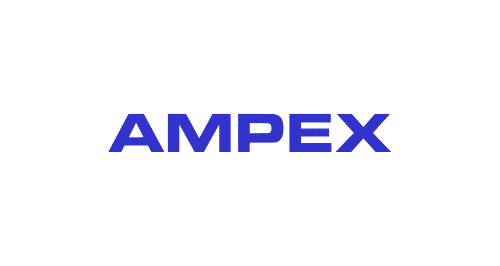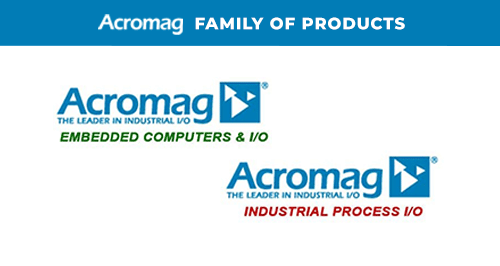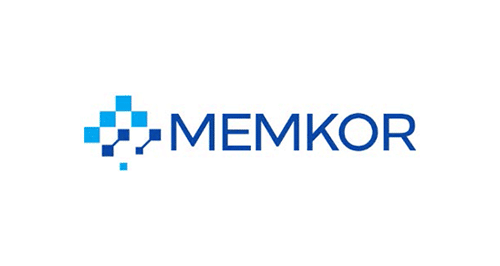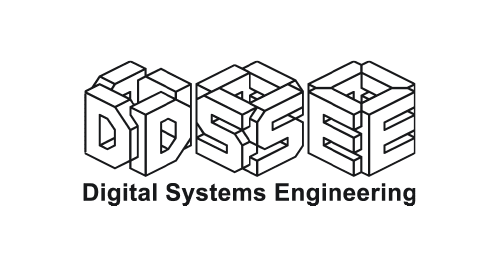
Testing High Speed Ethernet & Fibre Channel Avionics Switches
Modern avionics systems are increasingly employing the use of high speed serial data networks. High capacity Ethernet and Fibre Channel switch fabrics are commonly found at the core of theses avionics networks and it is typical to find a mix of both copper and optical media interfaces as well as multiple data link bit rates within a single aircraft system.
As these switching fabrics become integral pieces of avionic suites, functional test system must be developed with the capacity to replicate the combined data streams of multiple avionics end points when the fabric is off the aircraft and becomes the Unit Under Test (UUT).
This paper provides a brief technical overview of the common principals of high speed avionics Ethernet and Fibre Channel networks and switch fabrics and also addresses several key items that must be addressed when designing a test and simulation system targeted to support high speed switch UUTs.
I. INTRODUCTION
As avionics applications have grown in complexity and sophistication, the avionics networks that support them have had to also grop to provide suppot for increased data rates. As a result avionics communications buses, such as ARINC 629 and MIL-STD-1553, have given way to high speed switched network technologies based on commercial network technologies like Ethernet and Fibre Channel.
These more modern networks are capable of being implemented on both optical and electrical physical medium. They also contain provisions for operations at multiple bit rates. For Ethernet, common bit rates used are 10Mbit/sec, 100Mbit/Sec, 1Gbit/sec, and more recently up to 10Gbit/sec. For Fibre Channel 1Gbit/sec is commonly used, but 2Gbpit/sec and 4 Gbit/sec are also possible.
II. ETHERNET IN AVIONICS APPLICATIONS
Ethernet is becoming increasingly used in avionics applications. In many applications, because of the high data rates provided, standard Ethernet (carrying UDP/IP) is sufficient. This is especially true for point-to-point application where only two avionics devices are communication and no intermediate devices, such as a switch are required.
More demanding applications with larger numbers of network end points and real-time, deterministic requirements must use specialized variants of Ethernet. These variants add network features such as redundancy (of network paths) and partitioning for sharing of network bandwidth.
Some examples of standardized avionics networks based on Ethernet are ARINC 664/AFDXTM and Time Triggered Ethernet (SAE AS6802). ARINC 664 networks can be found on avionics systems of the A380, A330, and B787 just to name a few. Time Triggered Ethernet is used on the NASA Orion Onboard Data Network.
III. FIBRE CHANNEL IN AVIONICS APPLICATIONS
Fibre Channel is a flexible and highly configurable network technology that is currently used in several avionics network applications. Fibre Channel can support point-to-point, star network, and ring network topologies. Fibre Channel can also utilize optical or electrical network interfaces.

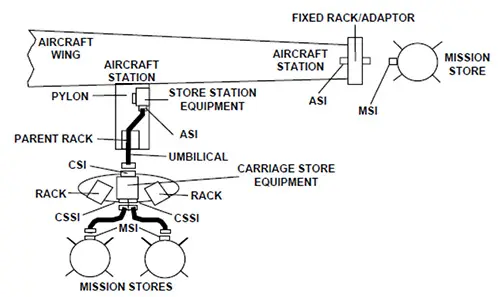
ARINC 818 is a commercial standard which defines the use of Fibre Channel for transmission of video streams. Major programs using ARINC 818 include the Boeing 787 and the A400M. While ARINC 818 defines the use of the Fibre Channel point-to-point topology, ARINC 818 signals are commonly routed through some kind of network video “switch” which is used to allow the point-to-point video connections to be dynamically changed without requiring actual changes to wiring. ARINC 818 allows for multiple bit rates to be used to accommodate the needs of the display system. Rates supported by ARINC 818 are 5.0, 6.375, 12.75, 14.025, 21.0375, and 28.05 Gbit/sec.
MIL-STD-1760E is a DOD standard that defines the use of SAE AS5653 (HS1760), which is based on Fibre Channel, in weapons bus interfaces between an aircraft and a stores interface. HS1760 utilizes the Fibre Channel network topology and defines specific functions for the network switches which are arranged in a top down tree architecture where the payload controller of the aircraft is at the top with child carriage store racks housing lower level switches.
HS1760 makes use of a 75 Ohm coaxial cable interface with 2.5Vp-p signaling. The bit rate used for HS 1760 is 1.0625 Gbit/sec.

IV. CONSIDERATIONS FOR TESTING AVIONICS ETHERNETSWITCHES
As previously mentioned, Avionics Ethernet networks typically employ an avionics specific variant of the protocol like ARINC 664 or Time Triggered Ethernet (TTE). Both of these network technologies define special Ethernet frame fields in the Ethernet MAC layer of the protocol. For example, the switches of both an ARINC 664 and TTE network switch the data traffic based on a Virtual Link (VL) field located in the MAC destination address of the frames. This VL field is also used by the switches to policy data traffic to ensure that the network is partitioned so that no one transmitter node can consume more bandwidth than it is allocated.
Therefore, any test equipment used to test ARINC 664 or TTE networks must have the capability to simulate Ethernet traffic with VL’s encoded into the MAC destination addresses. And for each of the VL’s, the test equipment must be capable of sending the VL’s data frames and configurable rates (between 7.8125 and 2000 Hz) so that the policing functions of the network switches can be verified.
Another key concept of switch verification is to ensure that the switch can operate acceptably under high load conditions. These types of tests require the test system to generate high rate data on multiple Ethernet interfaces (typically 16 to 24 Ethernet interfaces). With network data rates up to 10Gbit/sec for Ethernet, it is not possible to generate these high rates by streaming data from a host processor to an Ethernet LAN I/O module. To support high rate tests, a dedicated specialized Ethernet test modules with onboard data generation functions is required.
V. CONSIDERATIONS FOR TESTING FIBRE CHANNEL AVIONICS SWITCHES
A. ARINC 818 Video Switches
ARINC 818 utilizes the Fibre Channel point-to-pointtopology to stream data from a video source to a display device. Even though it is not a switched fabric architecture, ARINC 818 based systems still commonly used video switches for a variety of reasons including:
- As splitters to feed a single video source to two or more display devices.
- As a video channel selector to be able to switch the stream feeding a display from among multiple video stream sources.
Therefore, even though ARINC 818 is a point-to-point technology, switches and the need for switch testing remains a key consideration for video applications. As previously stated, ARINC 818 displays can require a wide possible range of Fibre Channel network bit rates. This becomes a key consideration when testing a video switch. The test equipment must be configurable to support multiple different bit rates between 5Gbit/sec and 30 Gbit/sec.
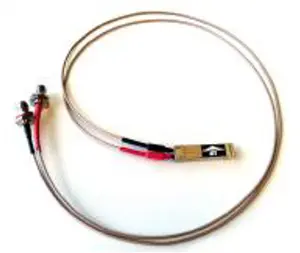
B. HS1760 Swiches
HS1760 uses a 78 Ohm electrical network interfacetherefore a more commonly available optical Fibre Channel interface module cannot be used for testing. A special HS1760 compliant transformer and a test instrument module that can host Small Form Factor Pluggable (SFP) transceivers is required to interface the test equipment to an HS1760 Aircraft Environment (AE) switch.
The HS1760 network, defined in SAE AS5653, maps the MIL-STD-1553 protocol over Fibre Channel. This means that in a network there is a Network Controller (e.g. the MIL-STD-1553 Bus Controller) which commands the Network Terminals (e.g. the MIL-STD-1553 Remote Terminals) to transfer data. The HS1760 AE switch is the interconnect element between the Network Controller and the Network Terminals. To test an AE switch, the test equipment must have the ability to function as a Network Controller (NC) and multiple Network Terminals NT. The interactions between the NC and NT require fast responses in accordance with the timing definitions of the protocol. Therefore, the test instrument must support embedded support for the NC and NT functions. Host software implementations will not meet protocol timing requirements on most common test system host platforms.
VI. FIBRE CHANNEL & ETHERNET TEST MODULE DESIGN
Based on the survey of some of the common avionics applications of Fibre Channel and Ethernet requiring avionics network switches, we can conclude that the following is a key list of features required of the test system interface modules.
- Both optical and copper interfaces must be supported Embedded data generation (on-board) is required to achieve the required high data rates and real time response requirements.
- Adaptable Ethernet and Fibre Channel protocol cores must be present to be able to modify these commercial protocols for support of avionics adaptations

To support these key features, a logical choice for instrument form factor is PXI Express. A PXI Express module will provide high bandwidth between the host system processor and the module and will also be well suited for combining multiple instruments into high slot count chassis so that test systems with up to 15 interface modules can be achieved in a single 3U 19” chassis. Assuming at least 2 Fibre Channel or Ethernet interfaces per module, a system capable of supporting tests of up to a 30 port switch can be supported.
The use of the PXI Express form factor also allows for enough circuit board real-estate and power to be able to host powerful Field Programmable Gate Arrays (FPGA) onboard the test module. With the FPGA available, the module can be designed to be reprogrammable so that the same hardware can be used to support both Ethernet and Fibre Channel interfaces. The availability of the FPGA also allows the network protocol logic to be soft and therefore modifiable to support the common avionics variations of Fibre Channel and Ethernet.
The PXI Express test module can be designed to provide sockets for SFP transceivers to also allow the base module to be adaptable to either copper or optical physical interfaces with the change of an SFP module.
Another advantage of a PXI Express design, is that the module can make use of the built-in PXI system clocks for time synchronization between all of the test instruments of the host system. This is particularly important for latency tests when the module transmitting into the switch may be different than the module receiving the routed frame coming out of the switch. To verify latency through the switch the clocks of the two modules must be synchronized. The synchronization services provided by PXI also allow multiple transmitting modules to be synchronized so that tests which hit the switches with frames on multiple switch ports at the same time can be supported to verify switch operations in extreme conditions.
VII. CONCLUSIONS
As Ethernet and Fibre Channel become more common technologies for use in avionics networks, test equipment will continue to have increasing requirements to verify network switches which are at the core of these networks. Unlike protocols like MIL-STD-1553 and ARINC 639, Ethernet and Fibre Channel networks can be implemented at a variety of data rates and over both copper and optical physical media.
To efficiently support these options and to also provide a flexible instrument that can be adapted to current and future variations of Fibre Channel and Ethernet, an FPGA based, PXI Express test instrument is suggested. This will allow for easy time synchronization and for easy integration of high channel count test systems required to verify 16 and 24 port network switches.
VI. REFERENCES
- Troshynski, Troy “Considerations for Testing and Simulation of MIL-STD-1760E/HS1760 Avionics Interfaces”, 2015
About Avionics Interface Technologies (AIT)
AIT has gained the reputation for having the most technologically capable products with quick delivery times, high reliability, and unprecedented support. Our wide market acceptance stems from quality products and services worldwide. Expert pre- and post-sales technical support comes as part of the AIT solution. Our direct AIT offices, in cooperation with our network of qualified representatives, provide optimized in-country service and support for all your avionics flight, test, and simulation requirements.To provide local service and technical support for our valued customers, AIT has distribution and support offices worldwide. We have field offices in Arizona, Massachusetts, New Hampshire, and Ohio; and we use local authorized manufacturers’ representatives throughout the US and Canada for quick response. AIT also has a separate a production and design center based in Dayton, Ohio, just outside of Wright Patterson Air Force Base, for the design and development of our Fibre Channel products to support the F-35 Joint Strike Fighter.
